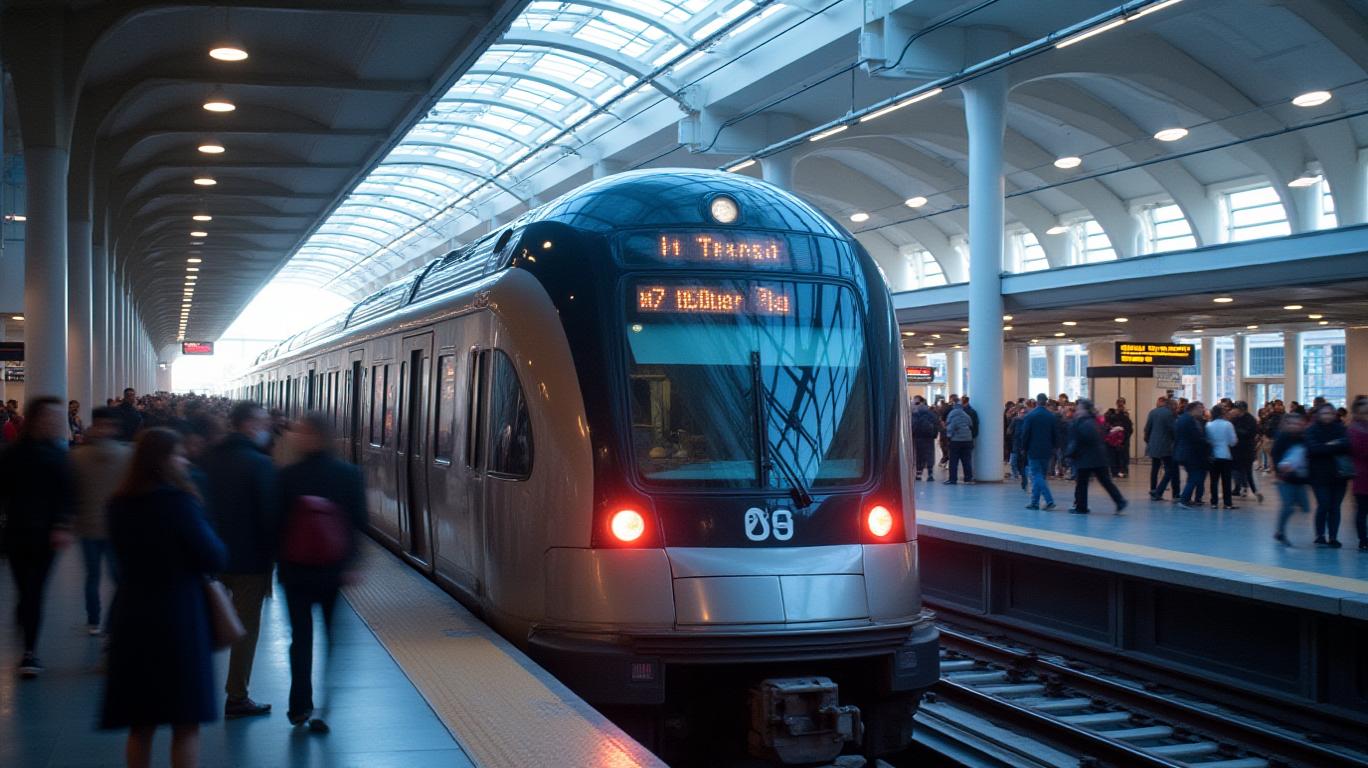NJ Transit’s Labor Resolution: A Blueprint for Sustainable Public Infrastructure Investment
The resolution of New Jersey Transit’s (NJ TRANSIT) labor dispute with the Brotherhood of Locomotive Engineers and Trainmen (BLET) marks a pivotal moment in the balancing act between fair labor practices and fiscal sustainability for public infrastructure. By avoiding a strike and securing a wage deal that averts fare hikes and budget deficits, NJ TRANSIT has set a precedent for how essential services can manage operational risks while preserving cash flow stability. For investors, this breakthrough signals a compelling opportunity to capitalize on resilient public infrastructure assets—from transit-linked real estate to infrastructure ETFs—while mitigating the existential threat of labor disruptions.
The Fiscal Tightrope: NJ TRANSIT’s Balancing Act
NJ TRANSIT’s 2024–2025 fiscal year began with a projected $119 million deficit, driven by pandemic-era ridership declines, soaring healthcare costs (up 47% since 2015), and inflation-fueled expenses. To address this, the agency implemented $96 million in cost savings—$44 million in operational cuts and $52 million in revenue tweaks like ending flexible FLEXPASS programs. Yet even these measures left a $106.6 million shortfall, prompting plans for a 15% fare hike in July 2024 and annual 3% increases thereafter.
The BLET negotiations, however, threatened to derail this fragile equilibrium. Had the union’s demands—including engineer salaries exceeding $314,000 annually by 2027—been accepted, NJ TRANSIT would have faced a staggering $1.36 billion in added labor costs over six years. This would have necessitated a 17% fare hike in 2026, a 27% increase in the corporate transit fee (CTF), or drastic service cuts. A strike alone could have cost $4 million daily and disrupted 350,000 commuters, further straining regional economies.

The Deal: A Model for Sustainable Wage Management
The eventual resolution—though details remain undisclosed—appears to have struck a middle ground. By aligning BLET’s terms with those of other rail unions (which reached agreements in 2021), NJ TRANSIT avoided the worst-case scenarios. Engineers’ earnings are now projected to rise to $172,856 by 2027, a figure competitive with peer agencies like SEPTA and the MTA. This compromise prevents fare hikes beyond the scheduled 3% annual increases, shielding commuters and taxpayers from sudden financial shocks.
The broader significance lies in its framework: a structured approach to labor negotiations that prioritizes long-term fiscal health without sacrificing fair compensation. For public transit agencies, this reduces operational risk by minimizing strike threats and stabilizing cash flows. Investors in infrastructure should view this as a template for evaluating the resilience of essential services, where labor agreements are as critical as ridership trends or maintenance backlogs.
Investment Implications: Riding the Wave of Operational Stability
The NJ TRANSIT resolution creates a tailwind for two key investment themes:
Infrastructure ETFs: Funds like the Infrstructure & Materials ETF (PICK) or the S&P 500 Infrastructure Index (XINF) stand to benefit from reduced strike risks and improved cash flow predictability. With NJ TRANSIT’s model potentially spreading to other transit agencies, the sector’s overall stability could attract capital fleeing volatile equities.
Transit-Hub Real Estate: Properties near NJ TRANSIT lines, such as the Vornado Realty Trust (VNO) or regional REITs with exposure to New Jersey’s urban cores, gain from the reliability of commuter services. A strike-averse transit system boosts office and retail demand in transit-oriented developments (TODs), while stabilized fares reduce the risk of ridership volatility.
The Broader Precedent: A Shift in Labor Dynamics
NJ TRANSIT’s success underscores a paradigm shift in labor negotiations for essential services. By refusing to accept unsustainable wage demands, the agency has sent a clear message: fair pay must align with fiscal reality to avoid cascading costs for users and taxpayers. This approach reduces long-term strike risks, which historically have caused billions in lost productivity. For investors, this means fewer “black swan” disruptions in sectors like utilities, healthcare, or transportation, where labor disputes can cripple operations.
Conclusion: A Signal for Strategic Capital
The NJ TRANSIT resolution is more than a local labor deal—it’s a blueprint for sustainable infrastructure investment. By demonstrating that fair wages and fiscal discipline can coexist, it opens doors for capital to flow into transit-linked assets with reduced operational risks. Investors should act swiftly to secure exposure to infrastructure ETFs and transit-oriented real estate, leveraging the precedent set here to capitalize on a trend toward resilient, strike-resistant public services.
The era of “no-strings-attached” labor settlements may be ending. For those who recognize this shift, the rewards will roll in like a smoothly operating commuter train.

Comments
No comments yet